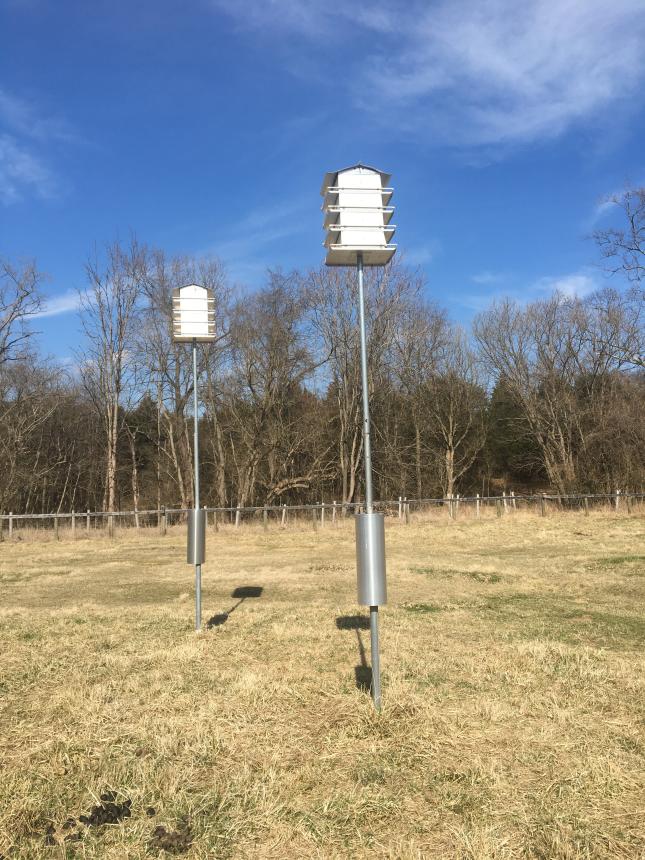FOR A MORE SUCCESSFUL NESTING SEASON
by Doug Pifer

I’ve put up seven bluebird houses at various sites on our property. For the past couple of years, bluebirds have nested in them and successfully raised a brood or two of young. Tree swallows have also used them. When I clean out the nest boxes in late winter, I’m happy to have enhanced some of the wildlife habitat of this small plot of land.
But successful nesting is far from certain. Over the three years since we’ve installed new fences, the barn cats have learned to walk on the top boards as if on balance beams. Now they can routinely investigate every bird house that’s mounted on a fence post. Red foxes, raccoons, snakes and other ground predators have learned to keep an eye on nesting boxes, waiting to grab eggs, nestlings, or even adult birds. Hawks and owls patrol the skies day and night.
ALTERNATIVE NEST SITES
It’s easy to install bird houses on fence posts, and such sites are attractive to birds such as tree swallows and bluebirds. But studies of nesting bluebirds have shown that over time, fence post nests may be less successful. They offer predators a safety lane across an open field where they can hide, hunt and ambush nesting birds. And if all the bird houses are in the fence line, the nests are set up for failure.
A safer alternative is to place some bluebird and tree swallow houses on free standing, non-climbable posts. Mount bird housing on metal fencing T-posts, PVC or metal conduit pipe cut to appropriate lengths. Positioning them ten or twelve feet from a woods or fence line makes the nests less accessible to predators.
INSTALLNG BAFFLES
Bird houses mounted on posts in open areas are even safer from predators if a baffle is provided. A baffle can be anything that allows the nesting bird easy access but excludes a predator. You can buy one or make it yourself. I put a pre-made baffle on the post supporting the wood duck nesting box I placed next to the creek. It resembles an upside-down funnel about two feet in diameter. A raccoon or blacksnake trying to climb up to reach the wood duck eggs will be truly baffled! Professional wildlife managers recommend using such baffles on every wood duck nesting box.
After reading literature by the Purple Martin Conservation Association (PMCA), I learned that the telescoping metal pole that holds my martin house is climbable by snakes and raccoons. Last season I bought and installed a custom-made metal baffle to protect my martin colony. Great horned owls also can reach their talons into martin houses and grab nestlings. The PMCA sells owl guards that fit in front of martin house openings to prevent such predation, but I have yet to try them.
PREDATOR GUARDS
To further protect bluebird houses, attach to the entrance a 2 ½ - 3-inch thick square of wood, drilled with a hole the same size as the opening. A cat, owl or raccoon won’t be able to reach the birds in the nest with its paw or talons. To also discourage snakes, attach a simple tube of bent wire mesh extending from the entrance five or six inches. The outermost edge of the mesh is cut and bent outwards so the sharp wires deter a hungry snake. Bluebird predator guards are available online or at stores that sell backyard bird feeding and housing supplies.

